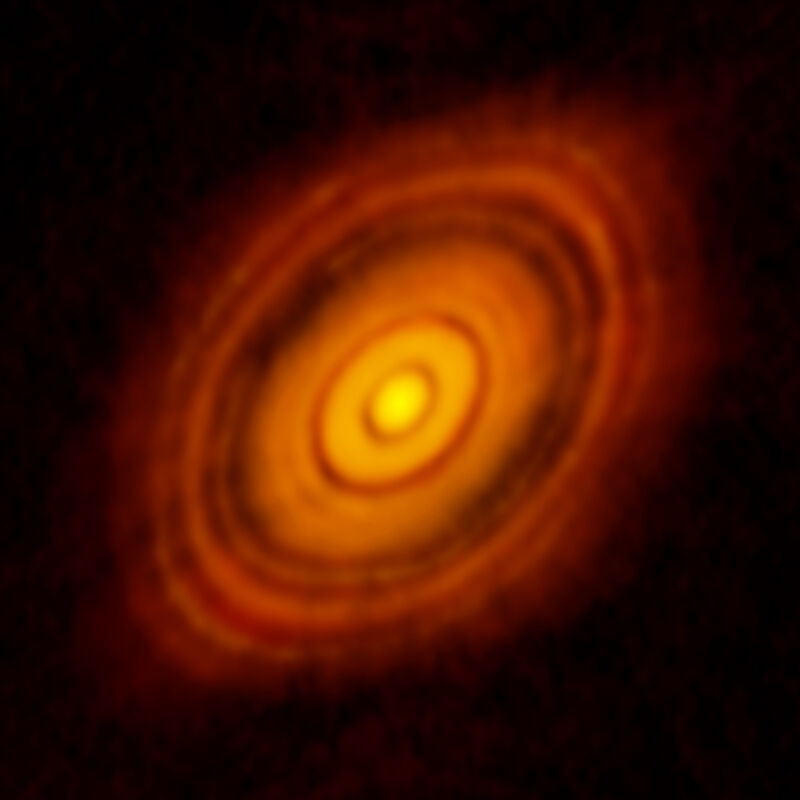Data from NASA’s Webb Telescope backs up ideas on planet formation

Enlarge / Image of a planet-forming disk, with gaps in between higher-density areas. (credit: ALMA(ESO/NAOJ/NRAO); C. Brogan, B. Saxton)
Where do planets come from? The entire process can get complicated. Planetary embryos sometimes run into obstacles to growth that leave them as asteroids or naked planetary cores. But at least one question about planetary formation has finally been answered-how they get their water.
For decades, planetary formation theories kept suggesting that planets receive water from ice-covered fragments of rock that form in the frigid outer reaches of protoplanetary disks, where light and heat from the emerging system's star lacks the intensity to melt the ice. As friction from the gas and dust of the disk moves these pebbles inward toward the star, they bring water and other ices to planets after crossing the snow line, where things warm up enough that the ice sublimates and releases huge amounts of water vapor. This was all hypothesized until now.
NASA's James Webb Telescope has now observed groundbreaking evidence of these ideas as it imaged four young protoplanetary disks.The telescope used its Medium-Resolution Spectrometer (MRS) of Webb's Mid-Infrared Instrument (MIRI) to gather this data, because it is especially sensitive to water vapor. Webb found that in two of these disks, massive amounts of cold water vapor appeared past the snow line, confirming that ice sublimating from frozen pebbles can indeed deliver water to planets like ours.